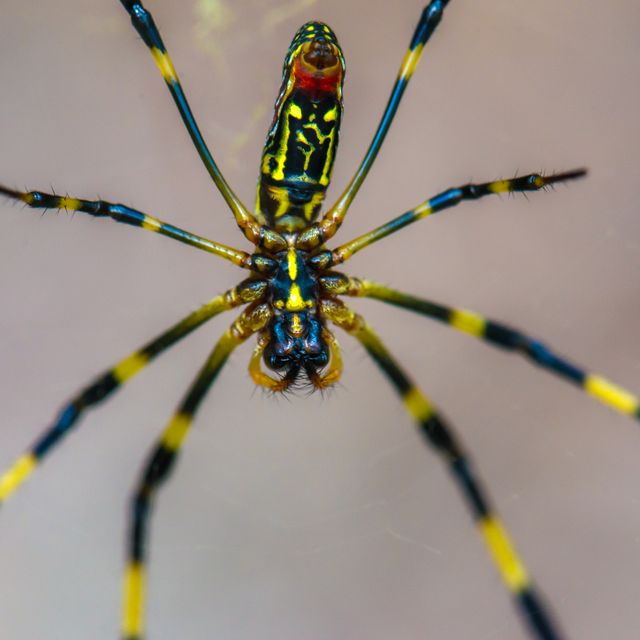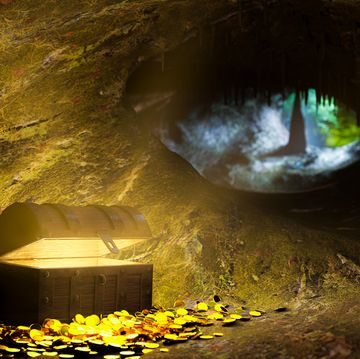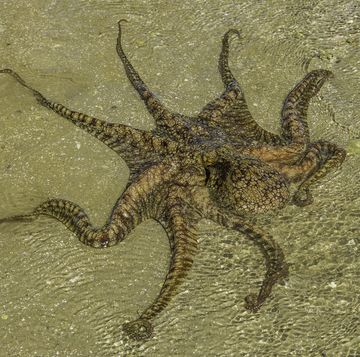- First spotted in the United States in 2013, the native east Asian Jorō spider is now spreading along the East Coast.
- Researchers say that the spider isn’t bothered by the urban environment or American climate, positioning it to continue a move northward from Georgia.
- A female Jorō spider can reach 3 inches across and create an orbed web up to 6 feet across.
There’s something alarming about a spider that can grow 3 inches across, builds orbed webs that can stretch more than 6 feet, and doesn’t seem bothered at all by an urban environment. In fact, they seem to thrive under very human-developed conditions.
That’s why the Jorō spider, native to east Asia, is grabbing attention as it makes its way west.
A new study from the University of Georgia, published in Arthropoda, shows that the spider is expanding its habitat. Originally spotted in the United States in 2013, the spider will likely expand northward, and seems to be able to do so while thriving in an urban landscape that most spiders can’t handle.
Spiders rely on vibrations within their web to know when to attack trapped prey. This means that the urban landscape can create quite the conundrum, with busy roads and buildings that create all sorts of vibration frequencies unrelated to prey.
“If you’re a spider, you rely on vibrations to do your job and catch bugs,” Andy Davis, corresponding author of the study, said in a statement. “But these Jorō webs are everywhere in the fall, including right next to busy roads, and the spiders seem to be able to make a living there. For some reason, these spiders seem urban tolerant.”
The invasive orb-weaving spider from east Asia was first spotted in Georgia in 2013, and a 2015 study confirmed that the Jorō had established itself in North America, ready to populate the continent. Millions of the yellow and black-blue spiders are now spread across Georgia, the Carolinas, and Tennessee, with additional sightings in a handful of other states. The fact that baby spiders can travel up to 100 miles from where they were born, thanks to a parachute-like web that forms after hatching, helps the proliferation.
The new study shows just why the spread is sticking.
The team researched the otherwise stressful living environment that other spiders can’t handle, and showed that the Jorō moves into areas that other spiders simply wouldn’t. The Jorō can build webs that stretch up to 6 feet across on powerlines, streetlights, and within the urban fabric of busy roadside locations.
The team used a tuning fork to simulate the vibrations caused by prey when caught in a web and observed the Jorō’s response. They attacked simulated prey 59 percent of the time in high-traffic areas, slightly lower than the 65 percent in low-traffic areas. These are high numbers compared to the less than 30 percent attack rate from other species. The researchers also found that the spiders in the busy areas didn’t appear to weigh any less, or have any adverse health conditions.
“It looks like Jorō spiders are not going to shy away from building a web under a stoplight or an area where you wouldn’t imagine a spider to be,” Alexa Shultz, co-author on the study and third-year ecology student at the University of Georgia, said in a statement.
The Jorō don’t just seem to ‘not mind’ the urban landscape—they can fully handle the environment. The spider has a high metabolism and heart rate, whihc makes them cold-hardy enough to survive through freezes that kill off other spider species. In Japan, the Jorō has spread throughout most of the country, and the ability to handle both urban life and cold weather allowed it to do so.
The continued growth of the Jorō doesn’t rely on aggressiveness, though. Rather, Davis believes that the spider outbreeds other species. In previous research, Davis found that the Jorō is timid, and could be the shyest spider ever documented. So, while the Jorō poses no real danger to humans—based on its propensity to freeze for up to an hour when humans come around (rather than a minute or two for most spiders), and the fact its fangs likely can’t puncture human skin—it will likely continue to grow in population.
“I don’t know how happy people are going to be about it,” Shultz said, “but I think the spiders are here to stay.”
Tim Newcomb is a journalist based in the Pacific Northwest. He covers stadiums, sneakers, gear, infrastructure, and more for a variety of publications, including Popular Mechanics. His favorite interviews have included sit-downs with Roger Federer in Switzerland, Kobe Bryant in Los Angeles, and Tinker Hatfield in Portland.













